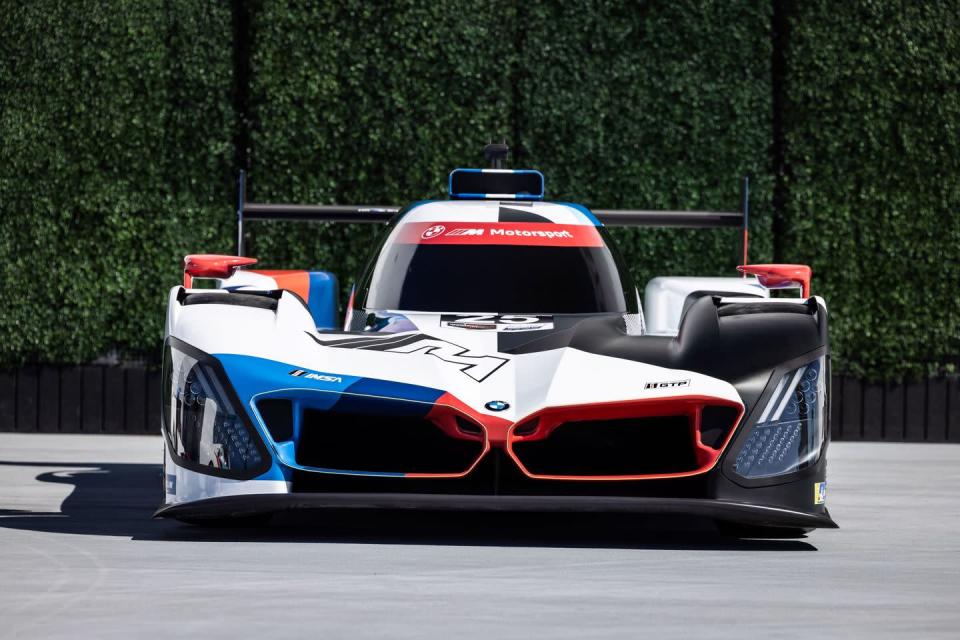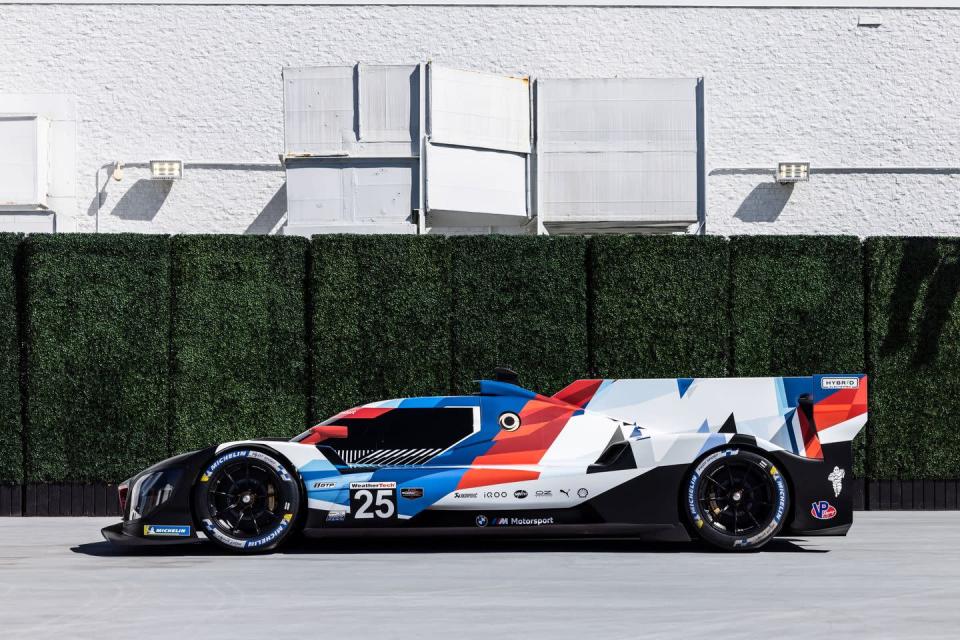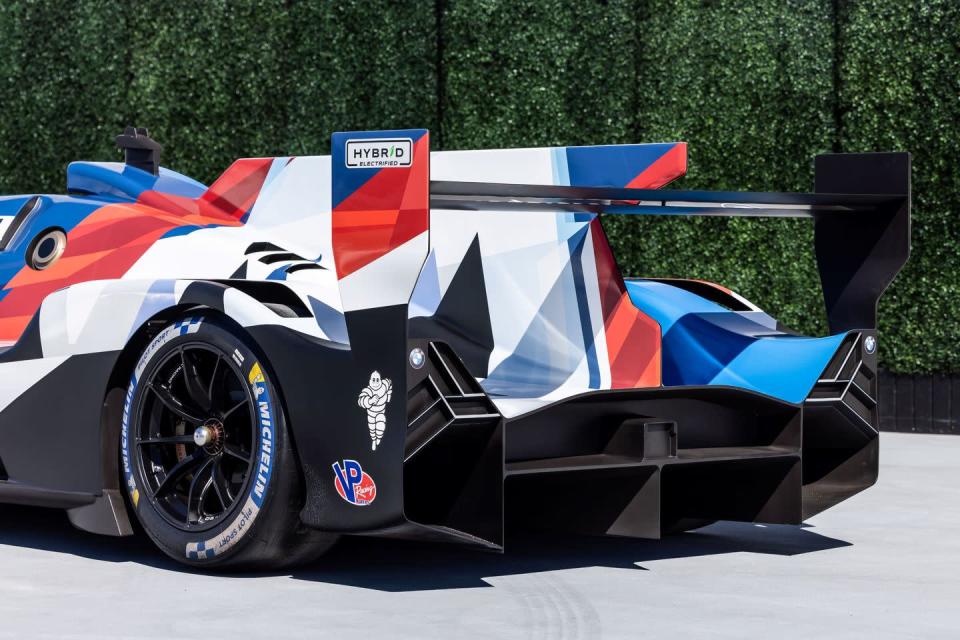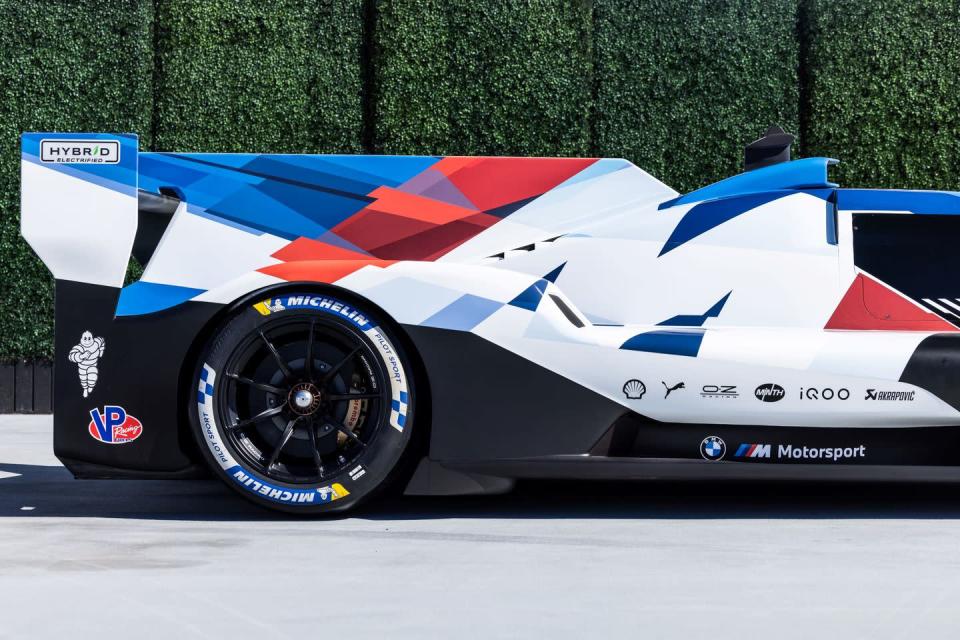
Back in June, BMW gave us our first look at its first top-level prototype racer in decades, the M Hybrid V8. Now, we know what the car will look like when it debuts at the 24 Hours of Daytona in January.
The car will race in both IMSA GTP and the FIA World Endurance Championship’s hypercar class, but it is based on the IMSA-rooted LMDh ruleset. That means it is built around the heart of an LMP2 chassis provided by Dallara, but the car is completely unrecognizable from Cadillac’s LMDh car built around the same tub.

Most notably, the M Hybrid V8 features a radical integration of BMW’s corporate face. Its giant kidney grilles give it a significantly more squared and geometric nose than any other prototype racing today. The rear wing, diffuser, rear wing, and tail light structure is all one piece, extending out from the fenders in a swoop and ending with lights built out of angular lines. In between, a more traditional shape is highlighted by low sides, angular fenders, and a stabilizing fin that extends above the car’s airbox snorkel. Even the Hofmeister kink makes an appearance along the window, here taking the form of a particularly aggressive angle that integrates directly into both sides of the car’s unique asymmetrical livery.

The livery may seem like a straightforward modern interpretation of BMW’s traditional racing colors from a distance, but a side-on view of the car’s left side reveals that all those cuts of color in red, white, and blue are actually a distinctive M hidden along multiple surfaces. Along the right, similar cuts create a different M aligned against the car’s Hofmeister kink. Like the distinct test camouflage, this scheme was designed by BMW Group Designworks. Unlike that livery, this one will adorn the car when it races at Daytona in January.
The M Hybrid V8 is powered by a twin-turbo flat-plane V-8 built on an engine previously used in the DTM in the mid-2010s. With the help of a ruleset-standard hybrid system, the car is capable of a combined maximum ouput of 697 horsepower. In practice, complicated balance-of-performance math meant to keep the series competitive means that most cars in the class will produce power below that number.

Although the car won’t go racing in Europe until the FIA World Endurance Championship program with WRT gets into motion in 2024, it will race the full IMSA GTP season with Rahal Letterman Lanigan in 2023. The team will run two full-time cars, set to be driven by Connor de Phillippi, Philipp Eng, Augusto Farfus, and Nick Yelloly. De Phillippi, an American, has been a full-time IMSA driver in the company’s GT cars for years. Farfus, Eng, and Yelloly all join Rahal Letterman Lanigan after spending 2022 as endurance-only drivers with the team’s GT programs.
The four will be joined by other drivers at various endurance races throughout the year, but BMW has only revealed one of those names so far. That distinction goes to Colton Herta, a reigning LMP2 winner in class at Daytona and a previous class winner with BMW’s M8 GTE program. Herta is better known as a star in IndyCar, where he has seven race wins in four years, and as a Formula 1 prospect, where he was briefly expected to join AlphaTauri for the 2023 season before licensing issues got in the way. Herta is confirmed to join the program for its debut race at Daytona.

In 2024, BMW will send M Hybrid V8s to race in Europe with the LMP2 standard-setters at WRT. That means the car will not race at Le Mans this year, but its debut in the biggest sports car race in the world is approaching quickly. Until then, the program has Daytona, Sebring, Petit Le Mans, and an IMSA championship to chase.
You Might Also Like
reference: ca.news.yahoo.com
